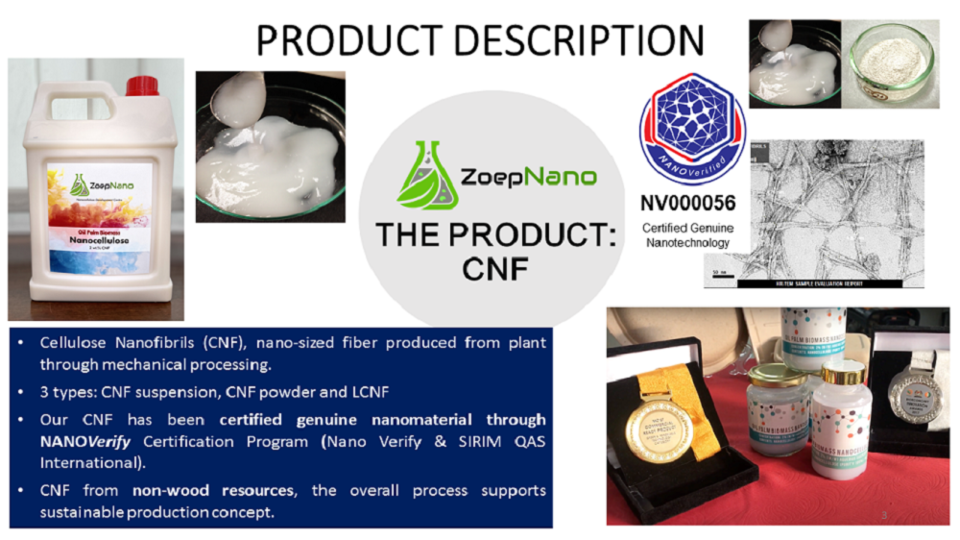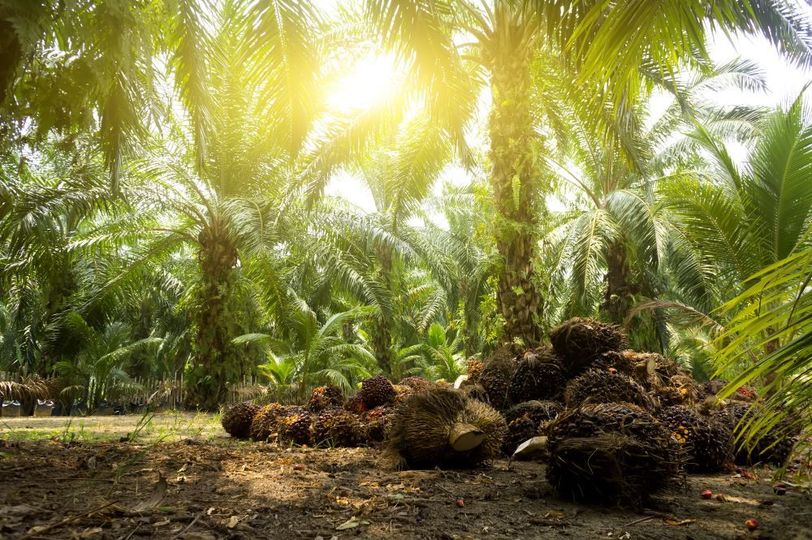Technologies
Discover, Connect & Collaborate at TECHINNOVATION 2021
Cellulose Nanofibrils From Oil Palm Biomass
Technology Overview
Cellulose nanofibrils (CNF) is a type of nanocellulose with vast potential for several applications. It is an emerging material which has been attracting interest from manufacturers due to its versatility and unique properties such as lightweight, high strength, high crystallinity, high specific surface area, good water binding properties and biodegradability. This technology utilizes the waste from palm oil mills (which is the empty fruit bunch) as the raw material for CNF production.
Currently, methods to produce CNF requires long processing time, complex processes, and the use of chemicals. Using a laboratory-scale wet disc mill, micro-sized cellulose has been successfully converted to CNF through a fast, easy, and chemical-free method. The CNF produced has similar properties as wood-based nanocellulose and is available in both aqueous suspension and powder forms.
Technology Features, Specifications and Advantages
CNF produced from oil palm biomass offers the following features:
- Obtained from renewable and abundant source
- Extracted via a non-hazardous, environmentally friendly method
- Suitable for use as a filler to produce bio-based nanocomposites
- Compatible with polymeric matrices such as polylactic acid, polypropylene, polyethylene and polyhydroxyalkanoates
- Lightweight
- Superior mechanical strength
- Highly crystalline
- Biodegradable
- Can be further functionalized
- Diameter: 10 to 50 nm (average)
- Degree of polymerisation: 800-2000
Potential Applications
Potential applications for CNFs include (but are not limited to):
- Paper and paperboards – as a binder for improving strength and imparting enhanced moisture and oxygen barrier properties. Also provides smooth surfaces and better printability.
- Polymer Composites – as fillers for the reinforcement phase to improve mechanical properties and improve barrier properties
- Additive - as a nucleating agent (to improve the crystallization rate for enhanced melt-processing), thickening agent and stabilizer (as a rheology modifier, structural enhancer, and emulsifier) for various products
- Textiles – can be used to impart anti-bacterial properties, enhance textile strength or as a coating agent to improve colour density
- Electronics – to fabricate conductive devices, thin-film solar cell, printed electronics, coating devices etc
Customer Benefit
- Safe and environmentally method to manufacture CNFs
- Sustainable and renewable source of raw material
- Comparable mechanical strength in comparison with nanocellulose obtained from wood sources
- Ease of manufacturing CNF in the event of licensing the know-how

